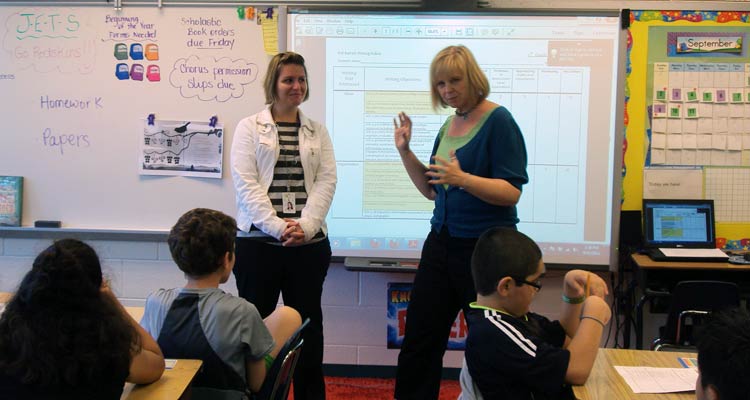Compared to multiplication tables, phonics flashcards, or the periodic table, rubrics are relatively new in the world of education.
“But rubrics don’t have to be scary,” says Anna Day, K12’s director of instructional design, language arts & humanities.
What are rubrics? According to Carnegie Mellon University’s Eberly Center for Teaching Excellence:
“A rubric is a scoring tool that explicitly represents the performance expectations for an assignment or piece of work. A rubric divides the assigned work into component parts and provides clear descriptions of the characteristics of the work associated with each component, at varying levels of mastery. Rubrics can be used for a wide array of assignments: papers, projects, oral presentations, artistic performances, group projects, etc. Rubrics can be used as scoring or grading guides, to provide formative feedback to support and guide ongoing learning efforts, or both.”
Many parents and teachers never dealt with rubrics when they were students because rubrics did not come into vogue until late in the 20th century. Today, teachers use rubrics charts to communicate learning goals and as a scoring checklist to assess students’ effectiveness in reaching those targets.
“Rubrics are really helpful because they show you levels of performance,” Day says. “They make the grading process more transparent. They are especially helpful for evaluating compositions or oral presentations, or in other situations where there is not a single correct answer. For example, rubrics are often used to evaluate answers to questions that require written responses explaining an analysis or interpretation. We see rubrics used frequently in English classes, but also in science for writing reports or analyses and in history for students writing essays.”
Rubrics can be used for single lessons, to score an essay question, or for a group of topics within a class project. A typical rubric might score students on a scale of one to three or one to four points, indicating “poor” to “excellent” in gauging a student’s understanding of a topic.
The idea of the rubric is to encourage accountability, while making grading consistent and meaningful to the student. A rubric will also provide information to the instructor to help students improve.
Rubrics can be used by both teacher and student (often peers as well) as a source for feedback. The evaluation, in concert with constructive feedback, creates what is known as a formative assessment.
K12 schools use rubrics developed specifically for assignments in each grade, based on program content.
“They are completely tailored to target the objectives we are assessing,” Day says. “Our product development team includes content specialists for each subject. They work with our A & R (assessment and research) team, which focuses on assessment and best practices, reviewing things such as correctness and clarity.”
K12 rubrics provide clear, grade-appropriate guidelines for what is expected on each assignment. “This is all advantageous to our students,” Day says, “because we know our rubrics are tailored to the skills they’ll need to have for succeeding with a given assessment.”
What do parents and students need to know about rubrics?
Day says it’s vital for students to understand the categories being assessed and to understand the sometimes subtle differences in scoring levels. A word or two can sometimes mean the difference between scoring at level two or level three on a rubric.
Parents are most likely to be directly involved with K12 students in grades one through eight because they serve as Learning Coaches. In high school, the rubric relationship shifts to teachers and students.
Day says that parents with students in grades 1–8 can struggle with rubrics at times because they lack the exposure or experience in assessing the work of a variety of students. That can make it difficult for them to gauge what is typical for student writing at a particular grade level.
A bit of experience usually solves any such problems. K12 provides sample writing for kindergarten through third grade parents to help them get a better sense of what to look for in writing assignments.
Most importantly, Day says that parents and students alike should strive to use the rubric to their advantage.
“Use the rubric as a tool, to discuss a subject and share talking points,” Day suggests. “It’s often helpful for parents and students to look the rubric over together to understand the requirements for the assignment they’re working on.”
For more information on tailoring curriculum in alternative education settings, request a free information kit from K12 today.
Featured Image – Laurie Sullivan / CC by 2.0





































